Aviation Career Day much
more than just an air show
Story and photos
by Graham Hadley
It’s not every day that you get to see a Soviet-era MiG jet fighter roar down the runway and take to the skies over the St. Clair County Airport in Pell City.
But that was exactly what scores of visitors got to see Oct. 8. Children and adults pressed up along the ropes separating the viewing area from the runway as the powerful plane – and other vintage military and civilian aircraft of all kinds – took off as part of the St. Clair County Airport Aviation Career Day and Open House.
With the airport lined with unique aircraft, the event attracted people from all across the region. The lineup included military helicopters to an assortment of fixed-wing planes, including the Soviet-built MiG-17 fighter jet, a variety of World War II planes, a private jet, vintage and kit planes, not to mention the ever-present yellow sea plane that so often graces the skies over Logan Martin.
Ant that was exactly the idea.
The Career Day has several purposes. It raises awareness about career possibilities in the aviation industry, highlights the importance the St. Clair County Airport plays to the local community, and ways the community and local governments can support the airport, said Ike Newton, a pilot, an event organizer and member of the airport board.
“We really wanted to shine a spotlight on why the airport is so important to the Pell City, St. Clair County and surrounding areas …,” he said. “We are the only general aviation airport in St. Clair County and a reliever airport for Birmingham,” and can handle a wide range of aviation needs, with the exception of large commercial airliners.
The St. Clair Airport not only provides hangars and fuel but is home to a flight school and related aviation businesses. It also handles some cargo flights and other related services.
According to a 2020 financial report, the airport had a $9-million financial impact on the region with a combined employment of over 100 people generating more than $3 million in payroll, and contributing over half a million dollars in local tax revenue, Newton said.
What’s more, the airport is a core service for the region, making it more attractive not only to people who own private planes, but also is one of the key things businesses and industries look for in any area where they are considering relocating. It also provides much-needed hangar space, something that is always in high demand across Central Alabama and surrounding areas.
And if what was on display at the Aviation Career Day is any indication, St. Clair County Airport is perfectly suited to the task.
“This airport we have here is a little jewel,” Newton said.
More than just an airshow
While all manner of unique planes lined the airport and flew in stunning aerial displays overhead – with regular overpasses by visitors taking rides in a helicopter – vendors lined the parking area and other parts of the property. Inside the airport building proper, presenters lined up to talk about careers in aviation and other topics of interest, like the roles women have played in the industry over the years.
Civil Air Patrol units from around St. Clair were especially on hand to help educate people, especially the younger crowd, about all the options open to them in the field of aviation and how to get involved.
Major Richard Caudle with the Civil Air Patrol, with assistance from Cadet Staff Sgt. Luke Davis, manned the booth for the Springville Squadron 129 of the Civil Air Patrol. Touting the success of the program, especially the number of young members who have received their pilot’s licenses, the major showed off their displays of aviation information. It also featured tools, like model rocketry, they use in their training programs.
One of the key goals is to educate young people on the huge diversity of aviation careers available and the opportunities open to them for getting started with the programs from a young age.
And it’s not just airplanes and helicopters that the CAP and similar organizations are working with. Drone technology is becoming more important in both the civilian and military sides of aviation, and demand is high for people with those skill sets, they said.
While the vendors were busy talking to visitors outside, presenters in the airport were giving programs on all the career opportunities for people going into aviation, and there was something for everyone.
Holly Row, a retired air traffic controller and pilot, gave a class on Careers for Women in Aviation, followed by Lewis Holder, owner of Holder Aviation in Pell City, on Careers in Aviation Electronics. Other classes involved flying large commercial planes, aviation maintenance, military aviation and much more.
All about the aircraft
As much as the vendors and educators kept people informed, the biggest draw of the day was the aircraft – helicopters, seaplanes, personal jets and vintage aircraft of all shapes and sizes were on display – both on land and in the air.
As the various planes, particularly the vintage military ones, lined up and sped down the runway, people flocked to the dividing ropes to catch the takeoffs. Followed by demonstrations of formation aerial demonstrations, low passes just off the runway. It was particularly impressive when the MiG fighter jet did its flybys, followed by tight formations flying over the crowds, trailing streamers of smoke for all to watch.
Wave after wave of pilots showing off their very best skill held the constant attention of everyone on the ground.
For the planes on display, visitors got an up-close-and-personal view of some amazing aircraft.
Tomazz Jackson of Pell City posed in front of a private jet on display and was quick to point out that was the first time he had ever been near a jet. The owner allowed people to walk through the small, twin-engine private jet and get a feel for what flying in one would be like.
Koley Thompson of Alpine got to see firsthand what a vintage open cockpit of a trainer airplane from World War II looked like up close and personal. The beautifully restored and maintained blue and yellow Fairchild PT-19 is maintained by the Commemorative Air Force unit in Birmingham.
Allen Pilkington and Andrew Kennedy from the Commemorative Air Force Birmingham Escadrille were thrilled to show off the plane, a great source of pride for both men. Compared to the cockpit of the jet or even some of the newer propeller planes, the controls for the Fairchild were about as simple as you can get – the bare minimum necessary to fly a plane. Because of that and what Pilkington and Kennedy described as one of the smoothest flying planes they had ever been in, the Fairchild PT-19 made for the perfect pilot trainer during the war.
As popular as the vintage planes were, one of the biggest draws of the day, especially for the youngest future aviators, was the UH-72A Lakota helicopter from the National Guard Unit in Birmingham.
The pilots had disconnected the batteries, and children were allowed full access to the military chopper, including the cockpit. The pilots said this helicopter is mainly used for scouting missions in the United States – everything from border patrol assistance to search operations and other support roles after hurricanes and other emergencies.
Looking to the future
Airport Manager Wendy Watson and Newton classified the day as a huge success.
“We had a good turnout this year. Every year we have been growing, and that is definitely the direction we want to continue,” she said.
Newton noted the event does an excellent job of highlighting the important role the airport plays in many aspects of quality of life for the area and in the economic success of the region.
Likewise, both cannot stress the important role the community and local governments can play in the success of the airport enough.
Aviation Career Day plays a vital role in doing all those things – in addition to being a great, family friendly way, to spend a sunny Saturday.
“It’s a win, win, win situation for everyone involved,” said.
And with everything it takes to put the event together, they are already looking ahead to next year, with expectations of an even bigger crowd. l
















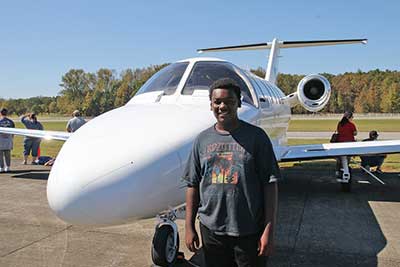
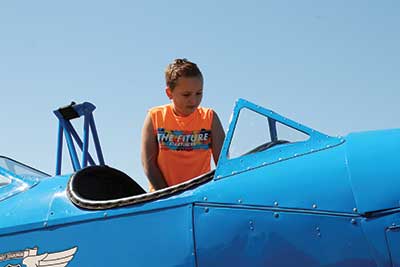


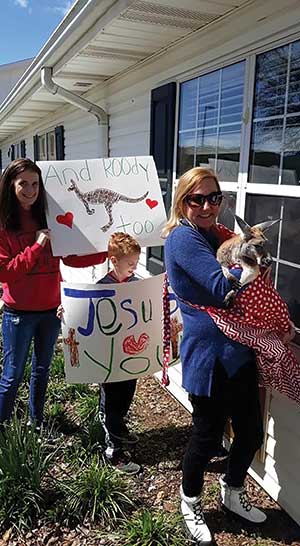
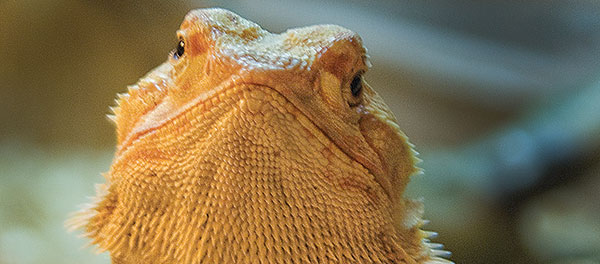
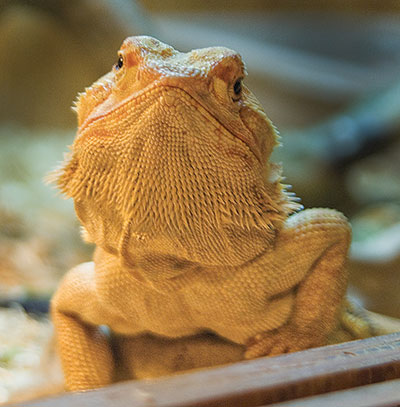 Springville family turns passion into business, teachable moments
Springville family turns passion into business, teachable moments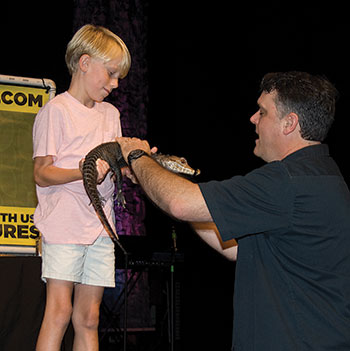 Like an exotic pet pied piper, children follow as Jamie walks around before the show, with Dewey the Bearded Dragon, an Australian lizard, clinging to his back or head or shoulder. “Put him on my head,” one child says. “Put him on my sister’s head,” another offers.
Like an exotic pet pied piper, children follow as Jamie walks around before the show, with Dewey the Bearded Dragon, an Australian lizard, clinging to his back or head or shoulder. “Put him on my head,” one child says. “Put him on my sister’s head,” another offers.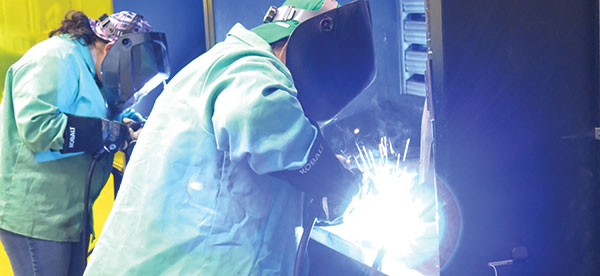

 “My own personal plan is to start at an entry-level position, then I want to go back to take more classes to get more certification.”
“My own personal plan is to start at an entry-level position, then I want to go back to take more classes to get more certification.”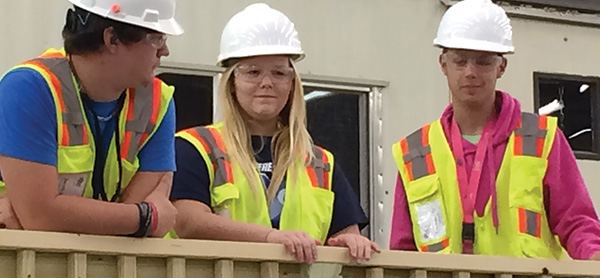

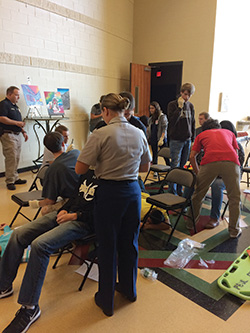 “We have a career coach this year, Shelley Kaler. Our counselors have a lot on them administratively – testing, college applications and all the other essential ways they help our students every day. So, Shelley is devoted to helping students figure out what they want to do — especially students who do not know what they want to do,” Pope said.
“We have a career coach this year, Shelley Kaler. Our counselors have a lot on them administratively – testing, college applications and all the other essential ways they help our students every day. So, Shelley is devoted to helping students figure out what they want to do — especially students who do not know what they want to do,” Pope said.
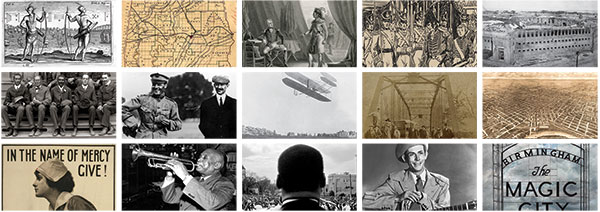
 After its debut in Montgomery in March 2018 at the state’s capitol, it begins in April of 2018 in the City of Moody and Lee and Wilcox counties and continues through November of 2019 en route to all 67 Alabama counties and the official 200th anniversary month of Alabama’s statehood.
After its debut in Montgomery in March 2018 at the state’s capitol, it begins in April of 2018 in the City of Moody and Lee and Wilcox counties and continues through November of 2019 en route to all 67 Alabama counties and the official 200th anniversary month of Alabama’s statehood.